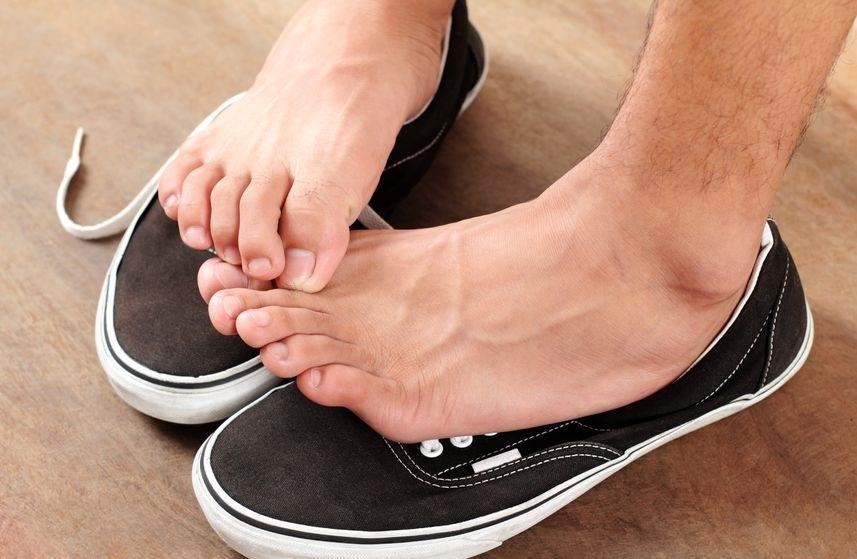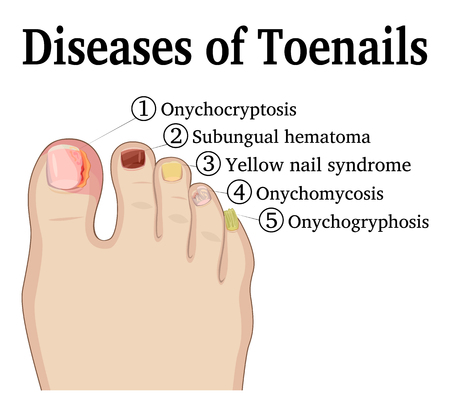Unlock the secrets of Yellow Nail Syndrome (YNS) with our comprehensive guide. Learn about its symptoms, causes, and innovative treatment options to manage this rare condition effectively. Empower yourself with knowledge for a healthier tomorrow.

Introduction
Yellow Nail Syndrome (YNS) is a rare and complex condition that manifests through distinctive nail changes and can significantly impact the respiratory and lymphatic systems. This guide delves deep into the symptoms, causes, and available treatments for YNS, offering hope and actionable advice for those affected. With a focus on understanding and managing this condition, we aim to provide a beacon of information for improved quality of life.
Table of Contents
What is Yellow Nail Syndrome?
Yellow Nail Syndrome (YNS) is an uncommon condition characterized by distinctive changes in the nails alongside potential respiratory and lymphatic system complications. People with YNS typically observe their nails turning yellow, becoming thicker, and curving more than usual. Nail growth may slow down markedly, and nails might even separate from the nail bed, a phenomenon known as onycholysis.

Symptoms of Yellow Nail Syndrome
YNS presents a unique symptom profile, primarily impacting the nails but also affecting the respiratory and lymphatic systems. A detailed understanding of these symptoms aids in the early detection and treatment of the syndrome. Key symptoms include:
Nail Changes
| Yellow Discoloration: The hallmark symptom of YNS is a yellow to greenish-yellow discoloration of the nails, which may affect one or several nails. |
| Thickening: Nails may become unusually thick and hard, complicating trimming and potentially causing discomfort. |
| Cuticle Changes: A notable reduction or absence of cuticles is common, with the surrounding skin often appearing smoother and shinier. |
| Slowed Growth: Nail growth may decelerate significantly, or in some instances, stop altogether. |
| Onycholysis: The detachment of the nail from the nail bed is a possible complication, heightening the risk of infection and further discoloration. |
Respiratory Issues
Chronic Respiratory Issues: Individuals with YNS may suffer from persistent coughs, frequent bronchitis, sinusitis, and pleural effusion, where fluid accumulates around the lungs, affecting breathing and overall well-being.
Pleural Effusion: Specifically, this condition involves fluid buildup in the pleural cavity, leading to respiratory discomfort, chest pain, and breathlessness.
Lymphedema
Swelling from Lymphatic Obstruction: YNS can cause swelling, typically in the arms or legs, due to blocked lymphatic flow, resulting in discomfort and mobility challenges.
Skin Changes: Affected areas may exhibit skin that becomes thicker, harder, and changes in texture and color over time.
Additional Symptoms
Beyond the primary symptoms, YNS patients might also experience:
| Sinusitis: Recurrent sinus infections are part of the syndrome’s respiratory manifestations. |
| Fatigue: A general feeling of tiredness is common, potentially linked to the chronic nature of the illness or the effects of respiratory difficulties on sleep and daily functioning. |
| Increased Risk of Infections: The compromised state of the lymphatic and respiratory systems may make individuals more prone to secondary infections. |
Causes of Yellow Nail Syndrome
Yellow Nail Syndrome (YNS) is a complex condition with elusive causes, characterized by distinctive nail changes and potential respiratory and lymphatic system effects. The origins of YNS are not fully understood, but a combination of genetic factors, autoimmune responses, persistent infections, environmental exposures, and associations with systemic diseases is believed to contribute. Here’s an overview of the potential causes and the diagnostic process for YNS:
Genetic Influence: Evidence suggests a hereditary component to YNS, with multiple cases reported within families, indicating a possible genetic predisposition.
Autoimmune Theory: Some experts believe YNS may result from an autoimmune reaction, where the immune system inadvertently targets the body’s own tissues, affecting nails and potentially the lymphatic and respiratory systems.
Chronic Infections: Ongoing infections, especially within the respiratory system, could play a role in triggering or worsening YNS symptoms, though the exact relationship remains under study.
Environmental Triggers: Exposure to specific chemicals or drugs might be linked to YNS, though definitive connections to particular substances are yet to be established.
Systemic Disease Links: YNS often co-occurs with various systemic illnesses, suggesting a broader health connection. This includes respiratory conditions like chronic bronchitis and sinusitis, lymphedema indicating lymphatic system involvement, and a noted correlation with certain cancers, pointing to a possible oncological aspect.
Diagnosing Yellow Nail Syndrome
Given its rarity and the general nature of its symptoms, diagnosing YNS is intricate and typically involves a comprehensive approach:
Clinical Examination: Diagnosis begins with a detailed examination of the nails for yellow discoloration, thickening, reduced growth, lack of cuticles, and onycholysis. These nail changes are pivotal for identifying YNS.
Medical History Review: A thorough medical history is essential to uncover any related respiratory or lymphatic symptoms, with a focus on recurrent respiratory issues or lymphedema, which are significant for diagnosing YNS.
Exclusion of Similar Conditions: Accurate diagnosis requires ruling out other diseases that mimic YNS symptoms, including:
- Fungal Infections: Lab tests can detect fungal presence, differentiating these infections from YNS.
- Nail Psoriasis: Nail and skin evaluations help distinguish psoriasis from YNS.
Imaging and Lab Tests: Chest X-rays or CT scans may be used to investigate respiratory symptoms, while blood tests can exclude other systemic diseases.
Specialist Referrals: Consultations with dermatologists, pulmonologists, or rheumatologists are often necessary to fully assess the syndrome’s impact and related health issues.
Treatment Options for Yellow Nail Syndrome
Yellow Nail Syndrome (YNS) is a complex condition with no definitive cure, but various treatments are available to alleviate symptoms, enhance life quality, and tackle any associated health issues. Here’s an overview of the treatment options for managing YNS effectively:
Topical Treatments
Antifungal Creams: To prevent secondary fungal infections that could worsen nail symptoms, antifungal creams are sometimes recommended, despite YNS not being a fungal condition.

Corticosteroids: These can reduce inflammation around the nails and may be beneficial if inflammation is a factor in the nail changes observed with YNS.
Oral Medications
Vitamin E: Some patients with YNS may find improvement in nail health with Vitamin E supplementation, which can promote growth and lessen yellowing, though results vary.

Zinc Supplements: Zinc is vital for nail health, and supplementation could help improve the condition of nails in YNS patients.
Antibiotics: Selected antibiotics with anti-inflammatory effects might be used to address symptoms, particularly if infection or inflammation is present.
Lymphedema Management
Compression Garments: These help reduce swelling by applying pressure to affected limbs, encouraging better lymph fluid circulation.
Physical Therapy: Techniques like manual lymphatic drainage, a type of gentle massage, can assist in managing lymphedema by promoting lymph fluid movement.
Exercise: Tailored, gentle exercise programs can aid lymph flow and decrease lymphedema symptoms, under professional guidance.
Management of Respiratory Symptoms
Antibiotics: Essential for managing recurrent respiratory infections in YNS patients, helping prevent further complications.
Chest Physiotherapy: Useful for improving lung function and mucus clearance, especially for those with chronic respiratory conditions linked to YNS.
Surgery: In cases with severe pleural effusion, surgical procedures may be necessary to remove excess fluid and relieve symptoms.
Additional Strategies
Regular Monitoring: Ongoing check-ups are crucial for tracking YNS progression and adapting treatment strategies as needed.
Multidisciplinary Care: A comprehensive approach involving dermatologists, pulmonologists, and other specialists is often required to address the multifaceted nature of YNS.
Importance of Awareness
Awareness and understanding of Yellow Nail Syndrome are key for timely diagnosis and management. Individuals noticing YNS symptoms, particularly those with ongoing respiratory issues or lymphedema, should seek medical advice promptly. Early and proactive management can significantly improve symptom control and overall quality of life.
Frequently Asked Questions
Q: What is Yellow Nail Syndrome?
A: YNS is a rare disorder characterized by yellowing, thickening, and curvature of the nails, often accompanied by respiratory and lymphatic system complications.
Q: What causes Yellow Nail Syndrome?
A: The exact cause of YNS is unknown, but it’s believed to involve genetic factors, autoimmune responses, chronic infections, environmental triggers, and associations with systemic diseases.
Q: How is Yellow Nail Syndrome diagnosed?
A: Diagnosis involves a clinical examination of the nails, medical history review, exclusion of similar conditions, and possibly imaging and lab tests, often requiring a multidisciplinary approach.
Q: What are the treatment options for Yellow Nail Syndrome?
A: Treatments focus on symptom management and may include topical antifungal creams, corticosteroids, oral medications like Vitamin E and zinc supplements, lymphedema management strategies, and addressing respiratory symptoms.
Q: Can Yellow Nail Syndrome be cured?
A: While there’s no definitive cure for YNS, various treatments can alleviate symptoms and improve quality of life. Ongoing research continues to explore more effective solutions.
Conclusion
Yellow Nail Syndrome, with its unique symptoms and challenges, requires a comprehensive understanding and a proactive approach to management. By staying informed about the latest treatment options and engaging in regular monitoring, individuals affected by YNS can navigate their condition more effectively. Remember, early detection and a tailored treatment plan are key to managing YNS and maintaining a healthy, active lifestyle. If you or someone you know is experiencing symptoms of YNS, consult a healthcare provider for a thorough evaluation and personalized care strategy.
| Arch Support |
| Arch Supports |
| Best Arch Support Insoles |
| Best Insole for Plantar Fasciitis |
| Insole for Flat Feet |



MOST COMMENTED
Animal-Based Proteins / Casein Protein / Dietary Protein / High-Protein Diets / Pea Protein / Plant-Based Proteins / Protein / Protein Deficiency / Protein Supplements / Proteins / Whey Protein / Whey Proteins
Is Protein Powder Safe for Teenagers and Children?
Animal-Based Proteins / Casein Protein / Dietary Protein / High-Protein Diets / Pea Protein / Plant-Based Proteins / Protein / Protein Deficiency / Protein Supplements / Proteins / Whey Protein / Whey Proteins
Unlock the Power of Proteins for Optimal Gut Health
Animal-Based Proteins / Casein Protein / Dietary Protein / High-Protein Diets / Pea Protein / Plant-Based Proteins / Protein / Protein Deficiency / Protein Supplements / Proteins / Whey Protein / Whey Proteins
Pea Proteins: The Best Plant-Based Protein Alternative?
Multivitamin
Total Health: Multivitamin for Active Lifestyles
Multivitamin
WellnessFusion: Complete Multivitamin Support
Dietary Supplement
Revitalize Your Health: The Magic of Red Yeast Rice Capsules
Foot care / Foot Health
Revitalize Your Foot Care Routine: Essential Tips for Optimal Foot Health
Foot Problem / Diabetics / Foot Health
Diabetics: Mastering Footwear Selection for Enhanced Foot Health and Ultimate Comfort
Exercises and Footwear Tips for Hammertoe Relief / Foot care / Foot Health / Foot Pain / Foot Problem / Hammertoes
Unlock Effective Exercises and Footwear Tips for Hammertoe Relief
Hammertoes / Foot Health / Foot Pain / Foot Problem
Unlock Relief: Essential Guide to Hammertoes Causes, Symptoms, and Treatments